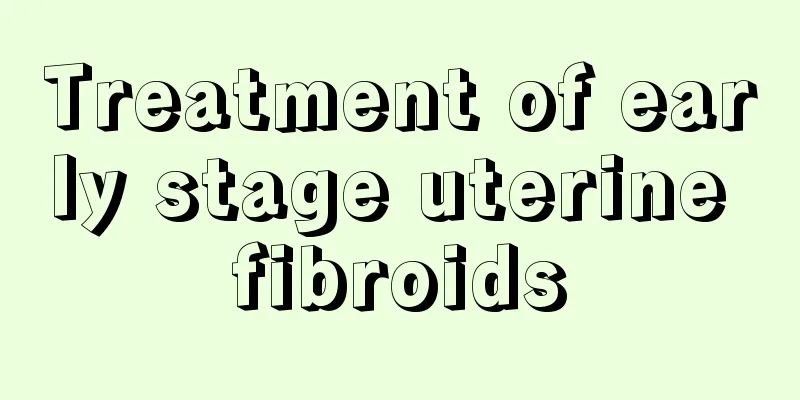Treatment of early stage uterine fibroids

|
Uterine fibroids are a common tumor of the female reproductive organs and one of the most common tumors among women. This disease is very harmful to women, and early detection of uterine fibroids is also very good for women, so that timely treatment can be given and the chance of cure will be greatly increased. But what are the treatments for early-stage uterine fibroids? Please see the introduction below! 1. Follow-up observation If the patient has no obvious symptoms and no signs of malignancy, regular follow-up observation can be performed. 2. Medication (1) Gonadotropin-releasing hormone agonists (GnRH-a) Currently, the commonly used GnRH-a in clinical practice include leuprorelin (Enanton), goserelin (Zoloft), triptorelin (Dapiga), etc. GnRH-a should not be used continuously for a long time. It is only used for pretreatment before surgery, generally for 3 to 6 months, to avoid causing severe menopausal symptoms caused by low estrogen. A small dose of estrogen can also be supplemented at the same time to counteract this side effect. (2) Mifepristone is a progesterone antagonist that has been clinically tried in recent years to treat uterine fibroids. It can reduce the size of fibroids, but the fibroids often grow again after discontinuation of the drug. (3) Danazol is used for preoperative medication or treatment of uterine fibroids that are not suitable for surgery. Uterine fibroids may grow larger after medication is stopped. Danazol can cause liver damage and androgenic side effects (weight gain, acne, dull voice, etc.). (4) Tamoxifen can inhibit the growth of fibroids. However, long-term use may cause enlargement of uterine fibroids in some patients, and may even induce endometriosis and endometrial cancer, so this should be paid attention to. (5) Commonly used androgen drugs include methyltestosterone (methyltestosterone) and testosterone propionate (testosterone propionate), which can inhibit the growth of fibroids. The dosage should be used carefully to avoid virilization. During the bleeding period of patients with uterine fibroids, if the amount of bleeding is heavy, uterine contractants (such as oxytocin, ergot) and hemostatic drugs (such as hemostatic acid, aminobenzoic acid (hemostatic aromatic acid), lizhihemostasis, Panax notoginseng tablets, etc.) can also be used, which can play a certain degree of auxiliary hemostatic effect. The above content is an introduction to the treatment methods for early uterine fibroids. The survival pressure of modern women is getting greater and greater, so the incidence of gynecological diseases is also very high. I hope that female friends can cherish themselves, take good care of themselves, and seek timely treatment if they are sick, instead of enduring it by themselves, which will only hurt themselves. |
<<: Symptoms of early uterine prolapse
>>: What should I do if a pregnant woman always vomits?
Recommend
Painless abortion, menstruation comes half a month later
After a painless abortion, women will experience ...
How to care for your eyes
Eyes are the windows to the soul. This sentence a...
Cervical cyst, do you know how to treat it?
A woman's uterus may develop many diseases, s...
Is it safe to enlarge breasts with your own fat?
With the continuous development of medical techno...
One persimmon and four medicinal herbs, do you know its health benefits?
Content compiled from China Traditional Chinese M...
Where does ovarian cyst hurt?
Ovarian cysts are a common disease in women. Most...
Recipe table for postpartum meals
Natural childbirth is the best way for women to g...
Harris Interactive: Mobile shopping users are interested in SMS marketing
The maturity of the mobile phone market has given...
Causes and treatment of lower abdominal pain after miscarriage
It is normal to feel lower abdominal pain after m...
What to do if gout attacks acutely? Teach you how to deal with it urgently
Gout is divided into acute attack phase and remis...
Is it good to take a shower during menstruation?
Everyone should know that there are a few days ev...
Is a cervical smear test painful?
I believe that all female friends have more or le...
Can girls drink Siwu Decoction when they have acne?
Many people like to drink Siwu Decoction, and the...
How to train endurance in cross-country running? What is the difference between cross-country running and road running?
Cross-country running is a sport that combines ru...









